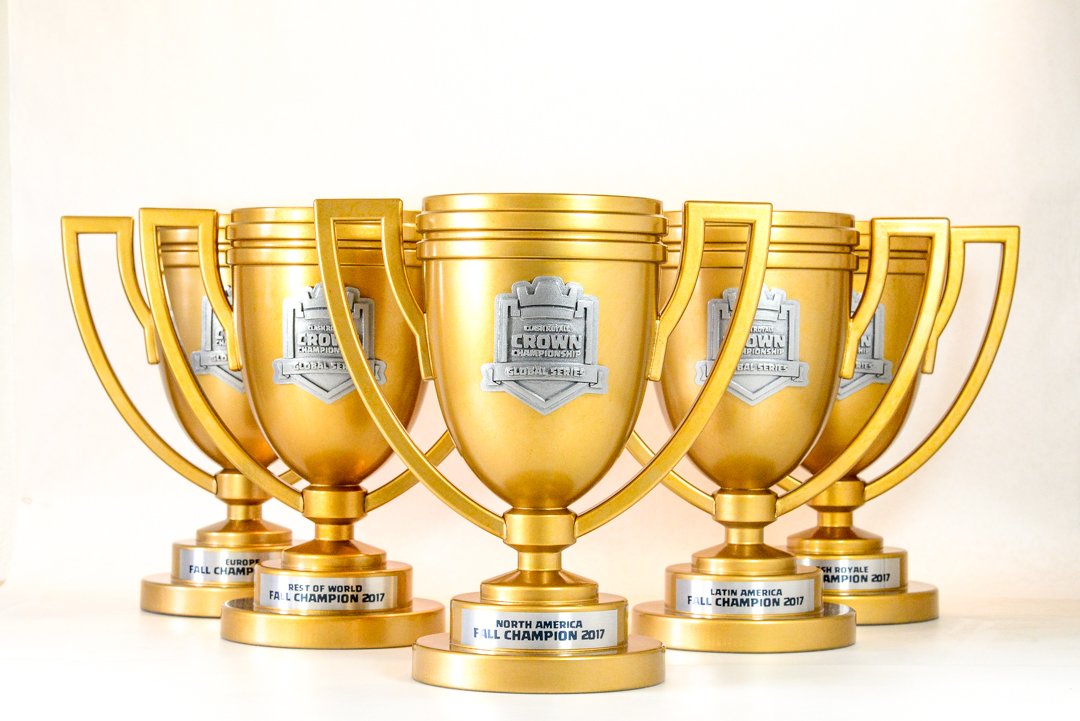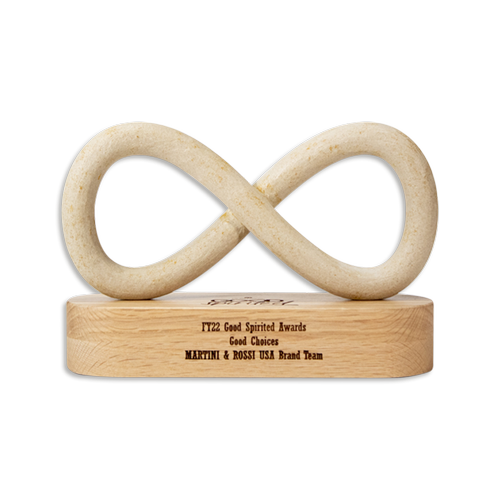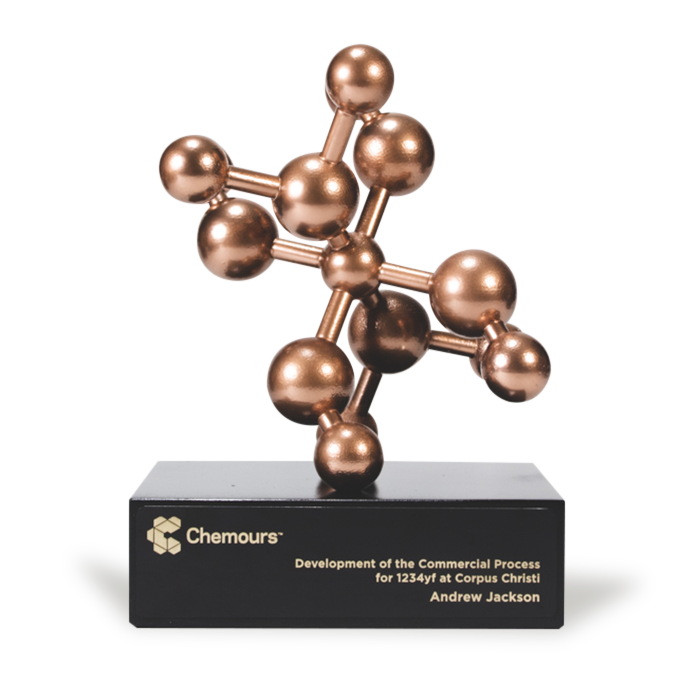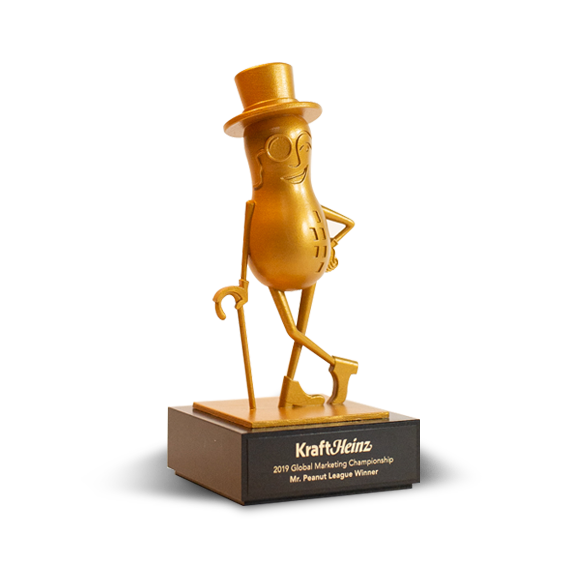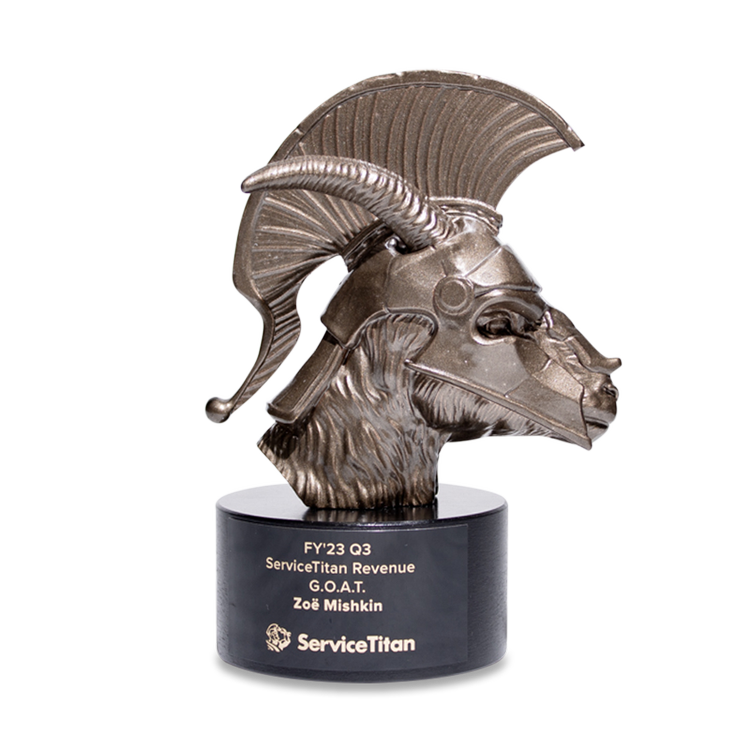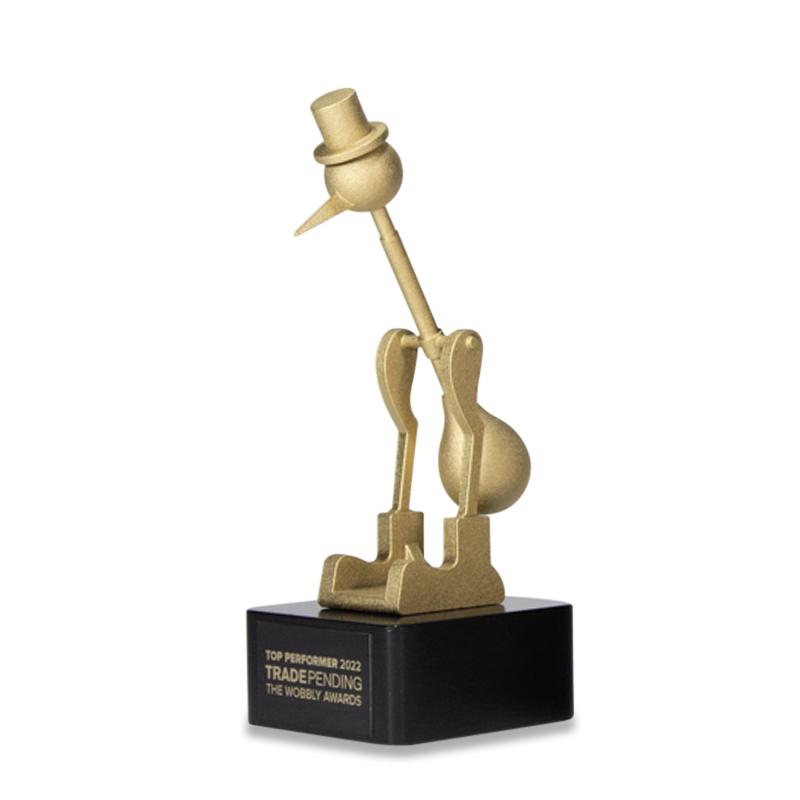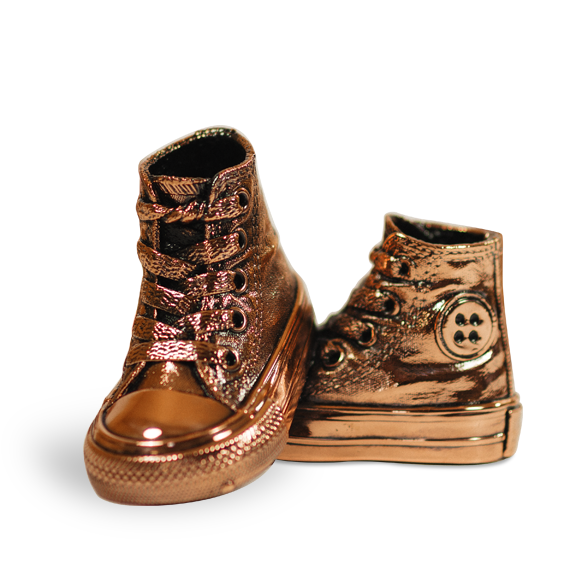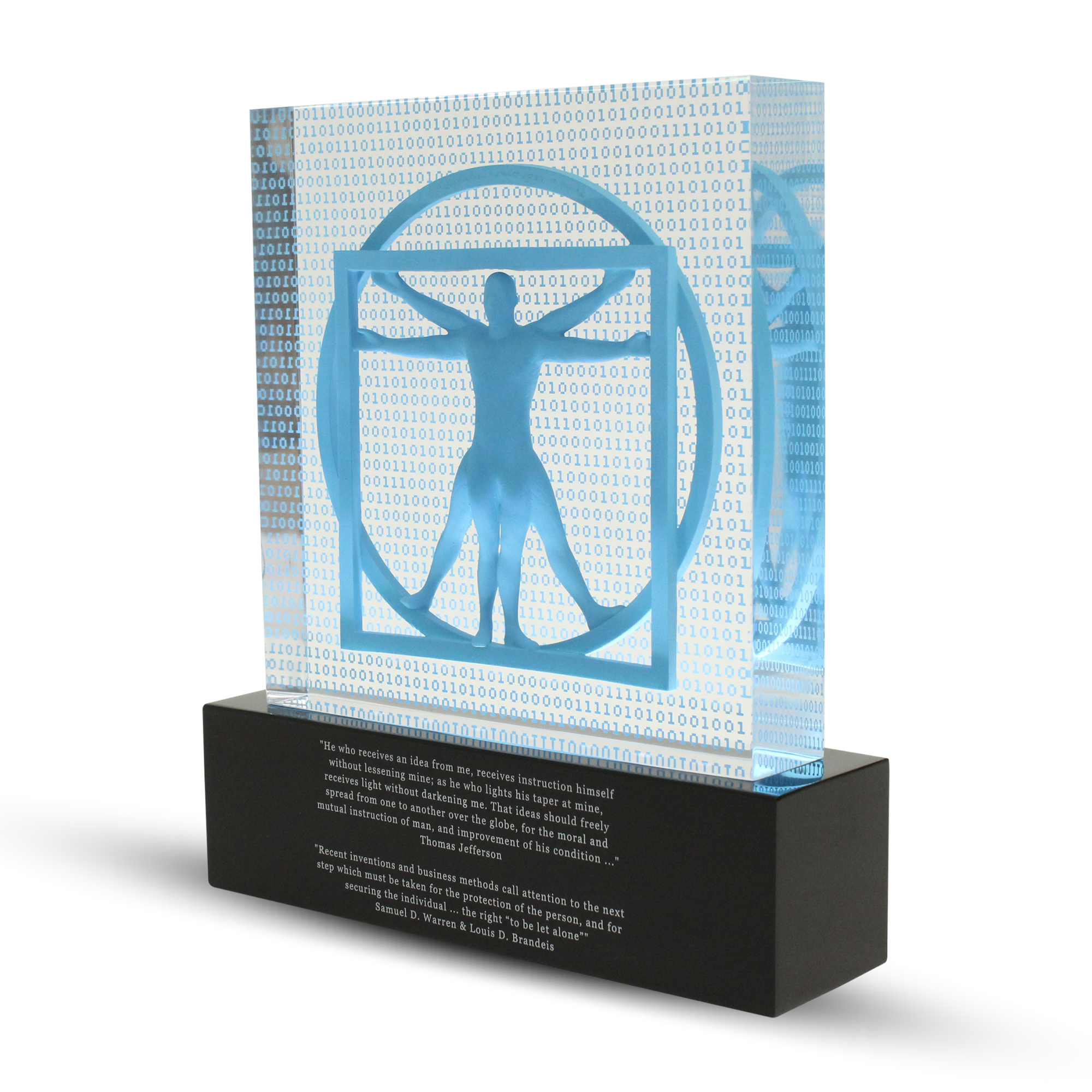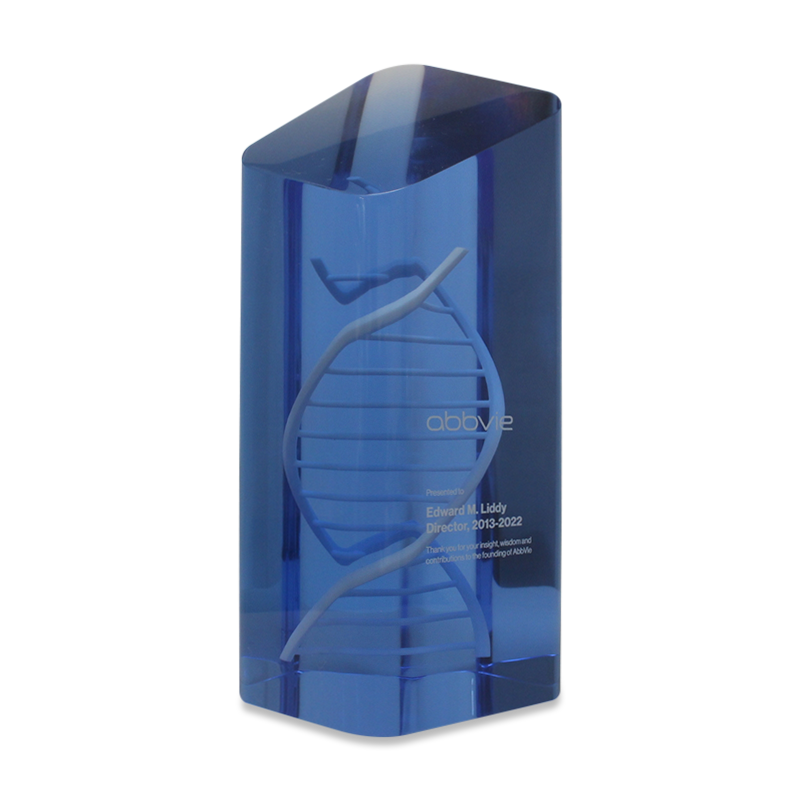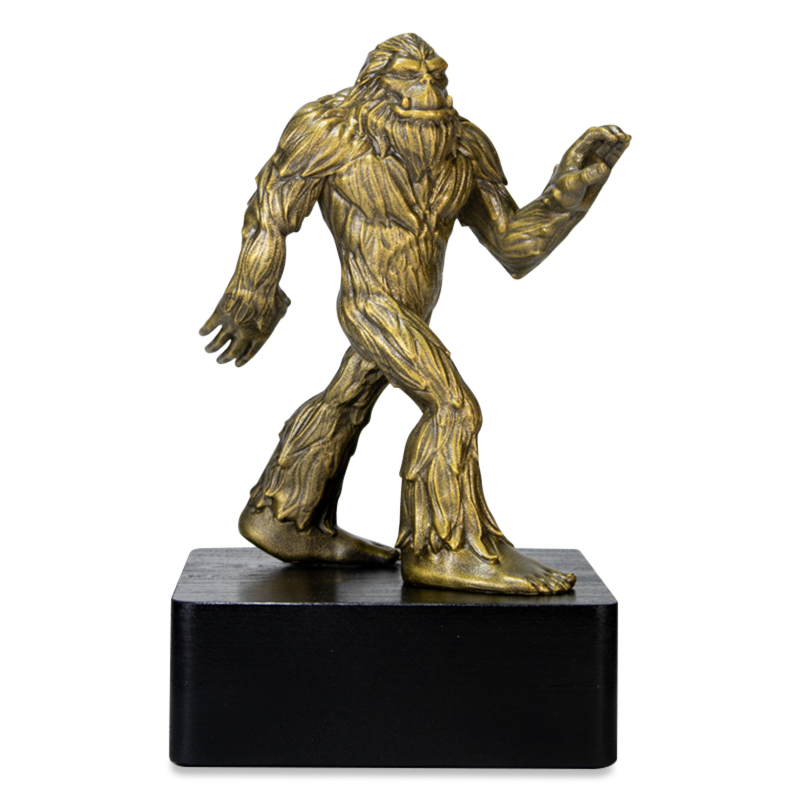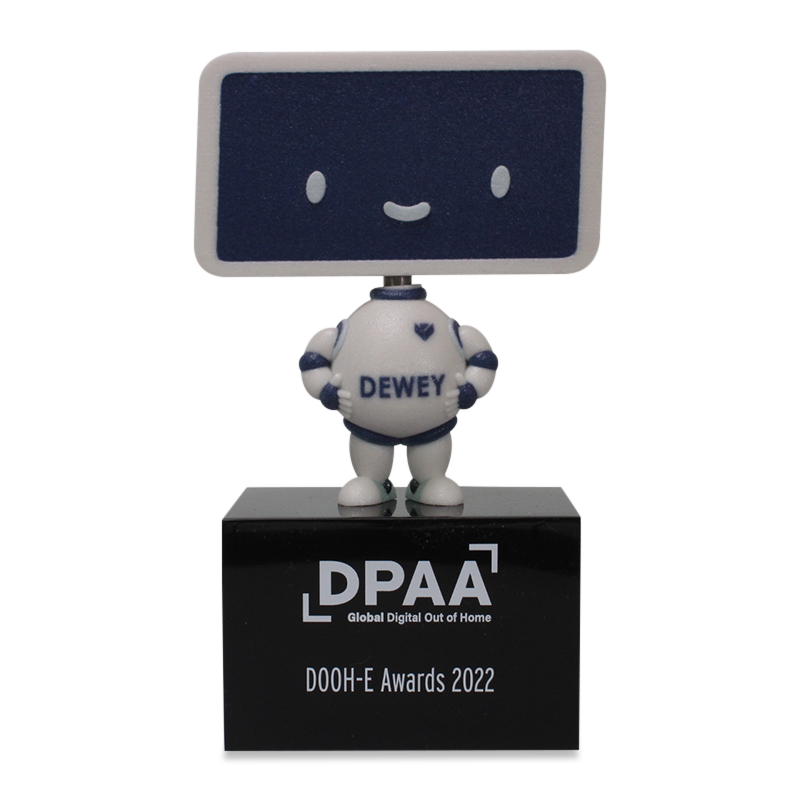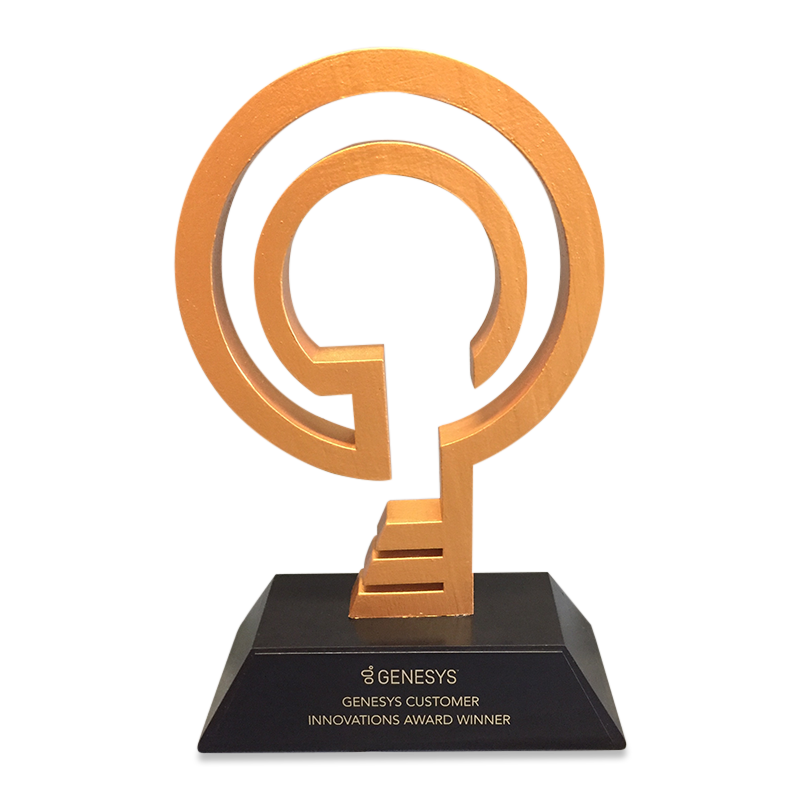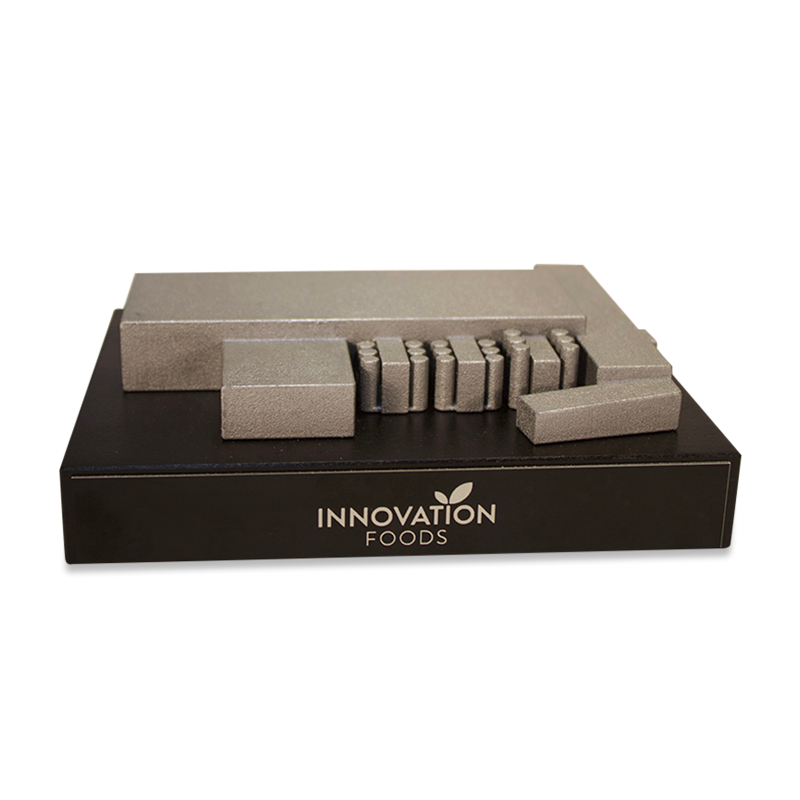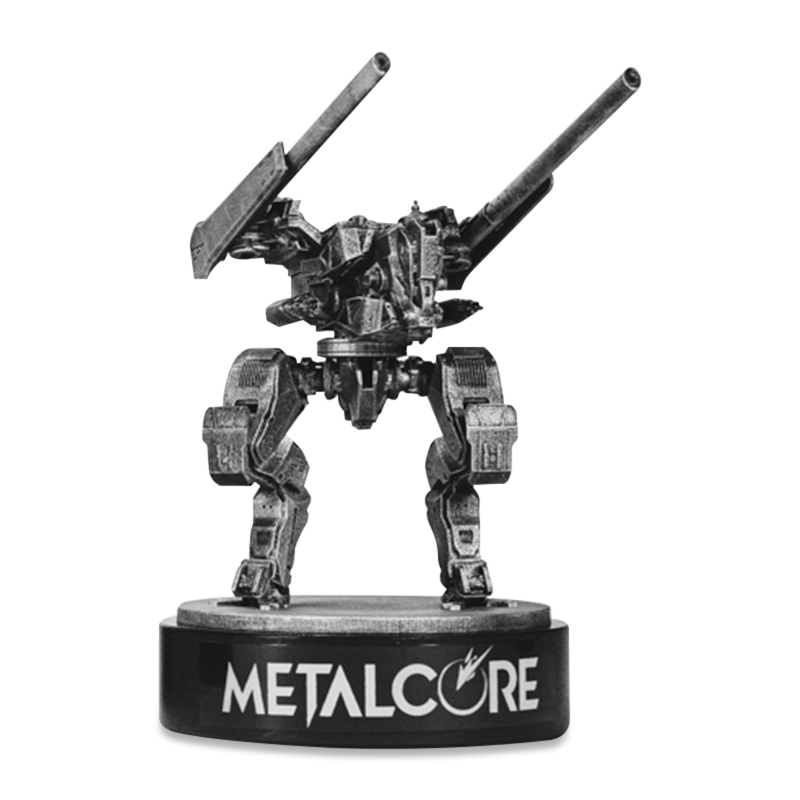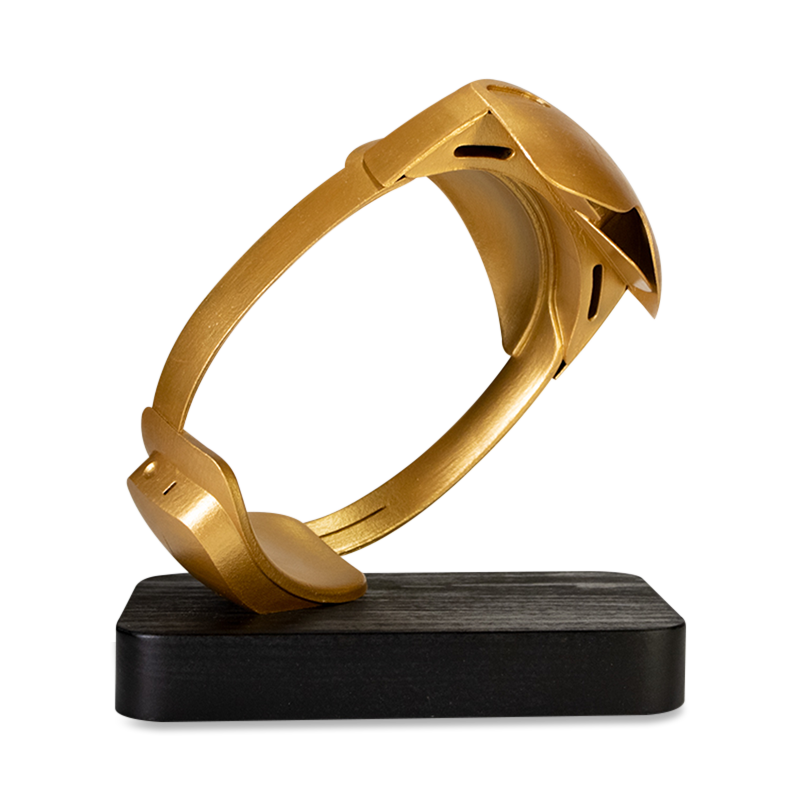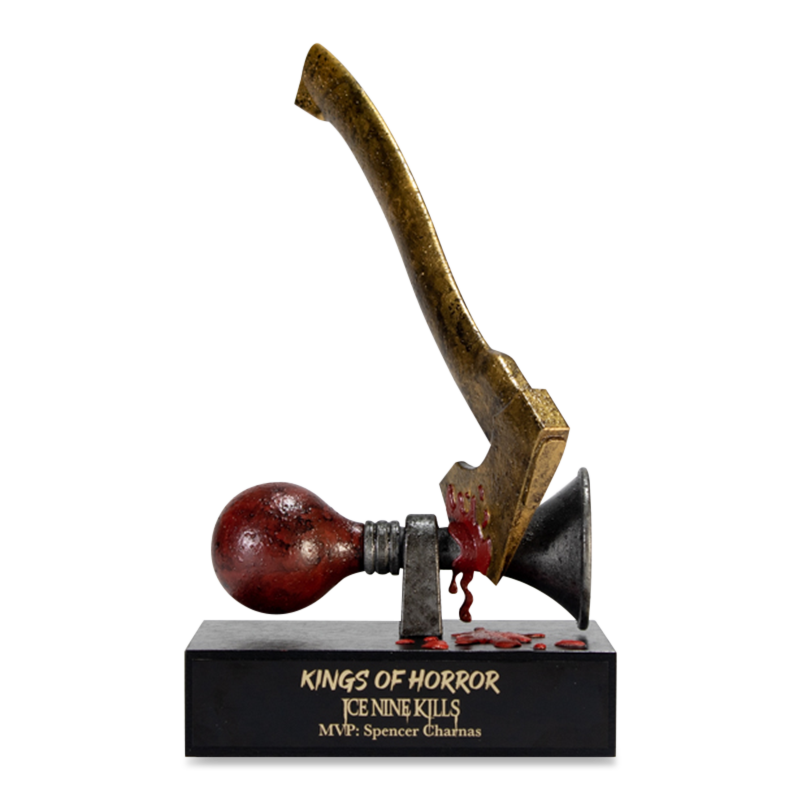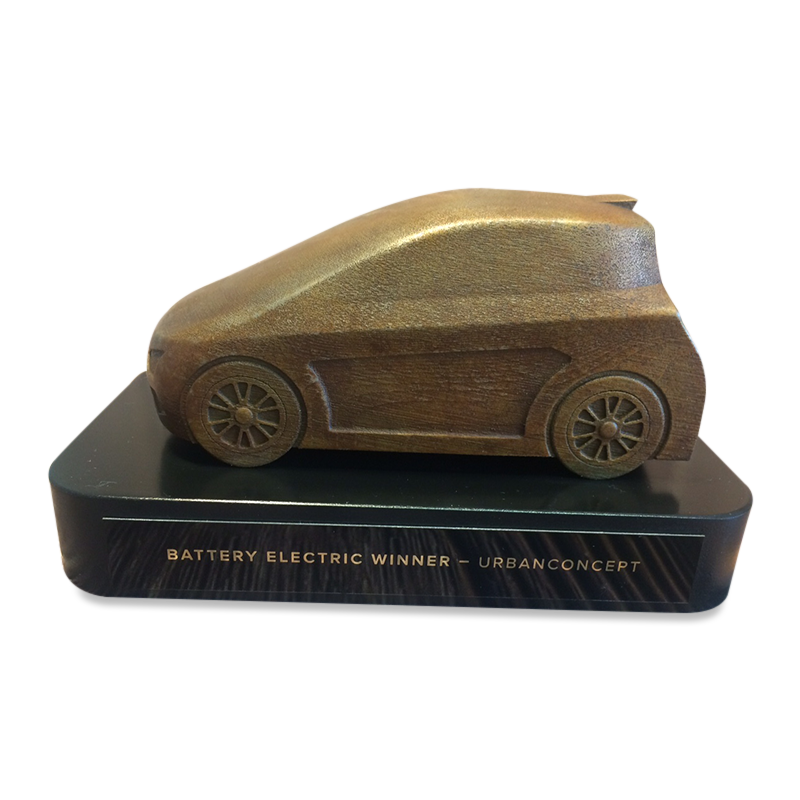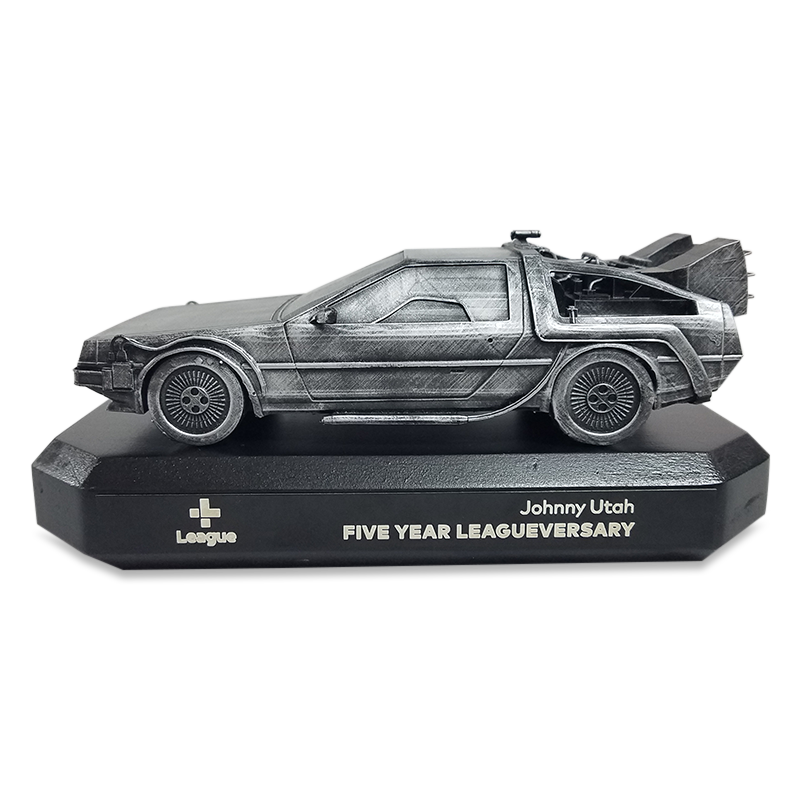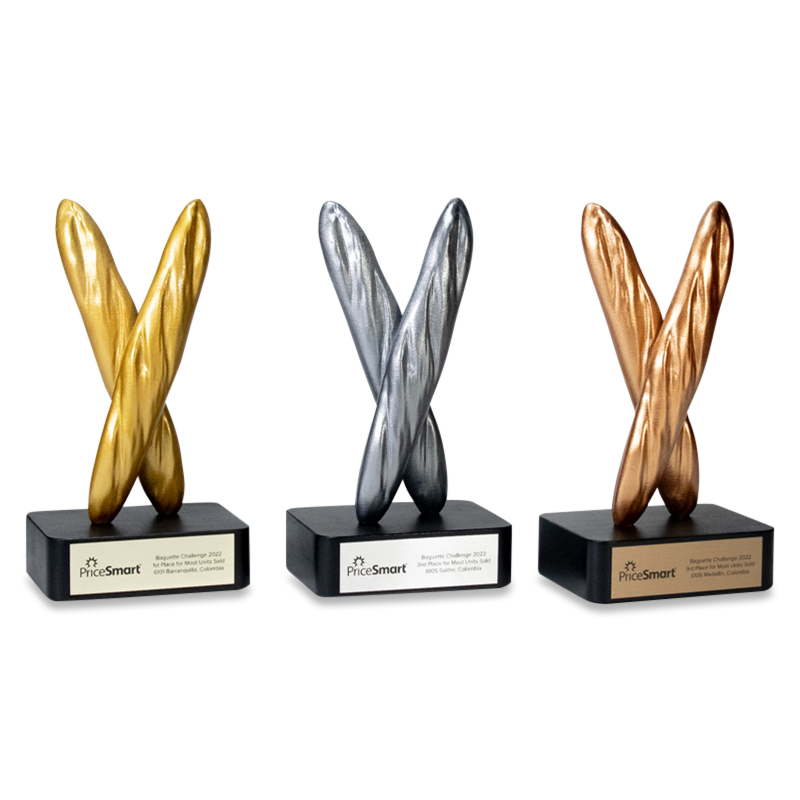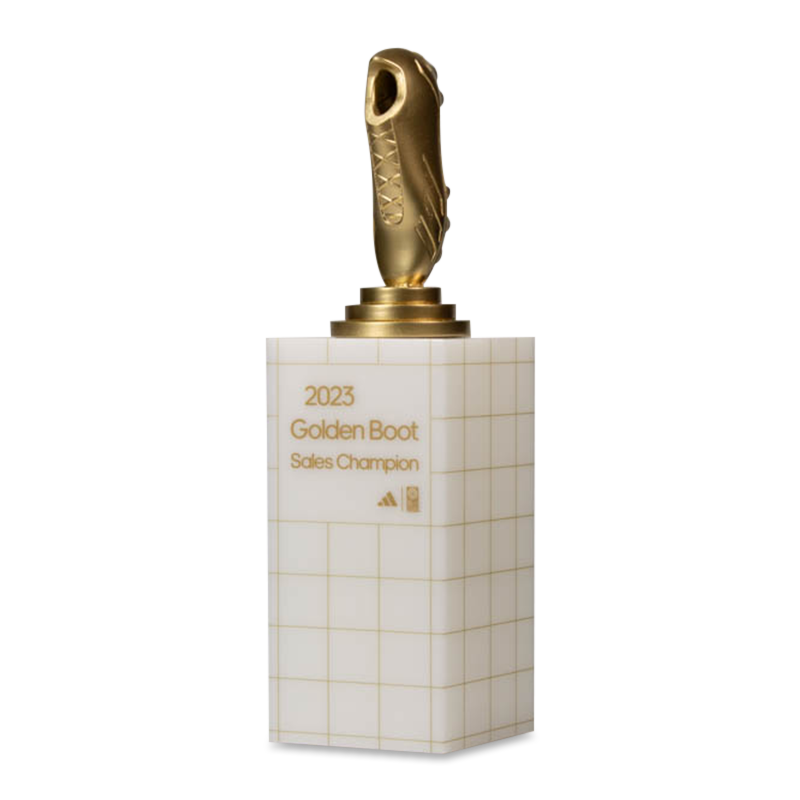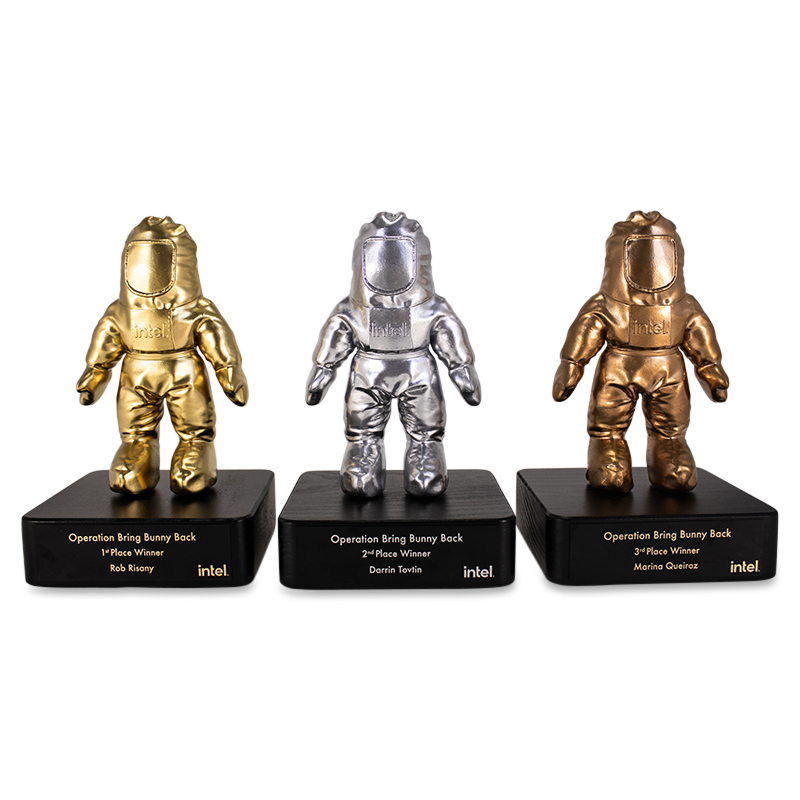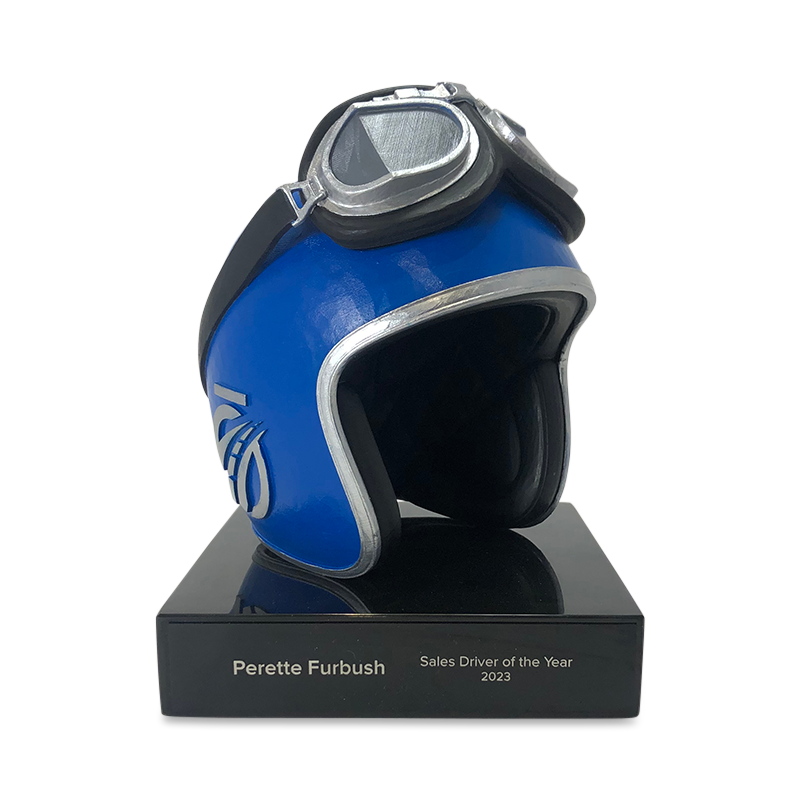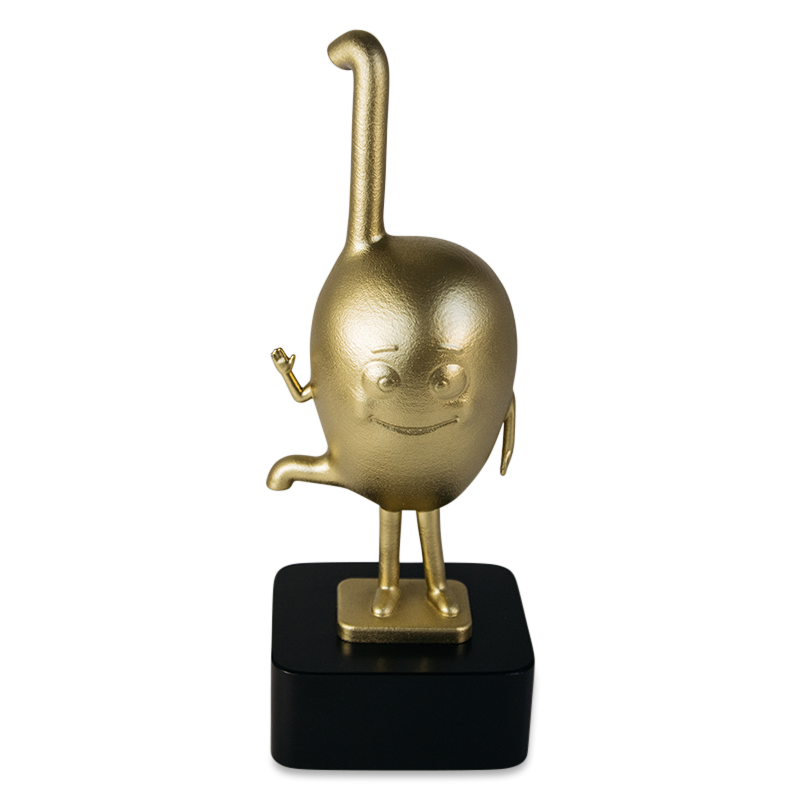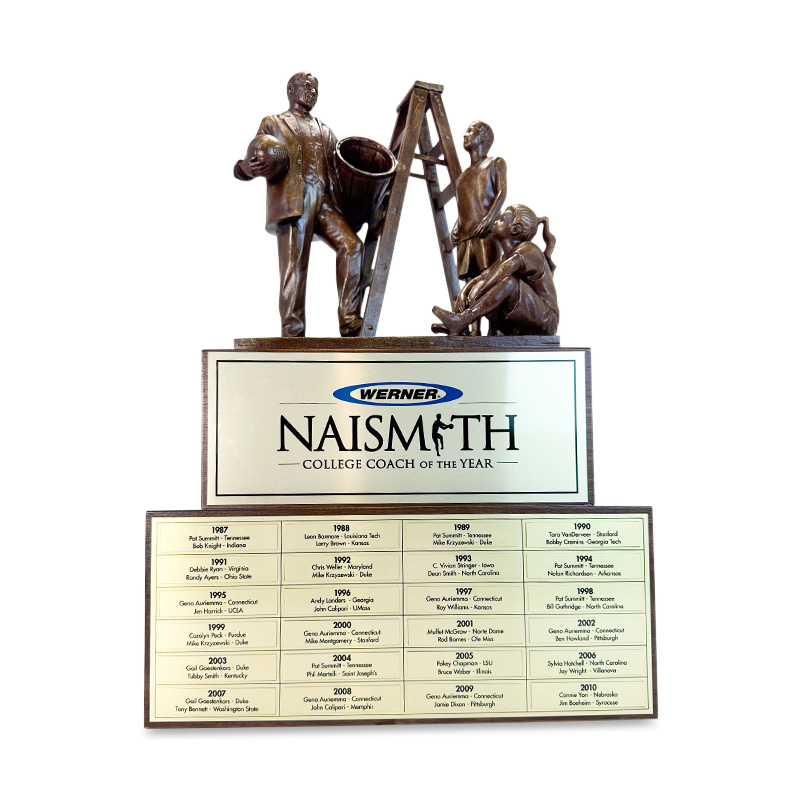3D Printed Custom Awards
3D printing, and the larger category of additive manufacturing to which it belongs, has emerged as a new and exciting methodology for creating custom awards. Bennett Awards has been on the leading edge of using 3D printing and additive manufacturing for our awards – we built our first 3d printer in 2010, and we have continued to adopt the latest additive manufacturing technology as soon as it proves viable.
A quick primer on 3D printing for awards: In a nutshell, a custom award design can be created using design software, and then uploaded to a 3D printer, much like sending a digital document to a paper printer. The 3D printer then creates a 3D sculpture based on the design file provided. The 3D printer can create this sculpture using a variety of materials, including nylon, resin, plastic, and wood, as well as a broad array of metal alloys, including steel, titanium, and precious metals. Different designs and design styles lend themselves to different materials, and one of our key areas of expertise is selecting a 3D printing material that is the optimal fit for a specific design.
3D printing, and additive manufacturing in general, can be used as part of the custom award design and creation process in a few different ways:
Model Creation: 3D printing can be used to create models. These models, like hand sculpted models, can then be used for the purposes of casting awards, usually from some metal material like bronze, pewter or zinc.
Embedded Objects: 3D printing can be used to create objects which can then be embedded in acrylic. Subsurface engraving remains a common choice to create 3D images that appear to “float” inside a translucent acrylic sculpture, but 3D printed objects can also be embedded in acrylic sculptures to create a similar effect.
Final Award Production: 3D printing can be used to directly create final awards. These sculptures are generally created from a durable polymer material and then painted to achieve the desired finish. Recently, though, 3D printing directly in metal has emerged as a viable alternative, and will continue to gain prominence as we move into the future. 3D printed metal awards can be finished in a variety of ways, including polishing, plating, anodizing, and patination.
There are two key advantages to using 3D printing to produce custom awards:
Cost: 3D printing can be an economical way of producing custom awards – in some cases, significantly less expensive than fabrication or casting. However, a very high level of quality detail can be achieved using 3D printing, creating an excellent cost/benefit proposition.
Schedule: 3D printing can reduce the time frame required to create custom awards – depending on the project, it can be up to 2X faster than fabrication and 8X faster than casting.
For each custom award design project, Bennett Awards will assess the design objectives and parameters, and use these to determine the best production methodology for that specific project. 3D printing and additive manufacturing are certainly options included in this evaluation set. One of the advantages of working with Bennett Awards is that we have deep expertise in all of the available production methods, and are not constrained in terms of which one we can recommend and deploy.
Below are some of the awards we have created using 3D printing. These are examples of what you can create as part of your next custom award design project!
Examples of 3D Printed Awards
Award Personalization
Most of the custom awards we create support some level of personalization, such as the recipient’s name, award name, presenting organization or date of presentation. Depending on the award design, this may be a combination of text and images (such as logos). Many of the custom awards we create can be mounted on bases with personalized engraving (see buttons below). Custom awards that do not include a base as part of their design may be able to incorporate personalization as part of the award itself. Once we understand your personalization needs, we will work with you to create a custom award design that supports these requirements.
Let’s Get Started!
As always, we would be happy to take a look at your custom milestone award objectives and recommend the best design approach for your needs.


